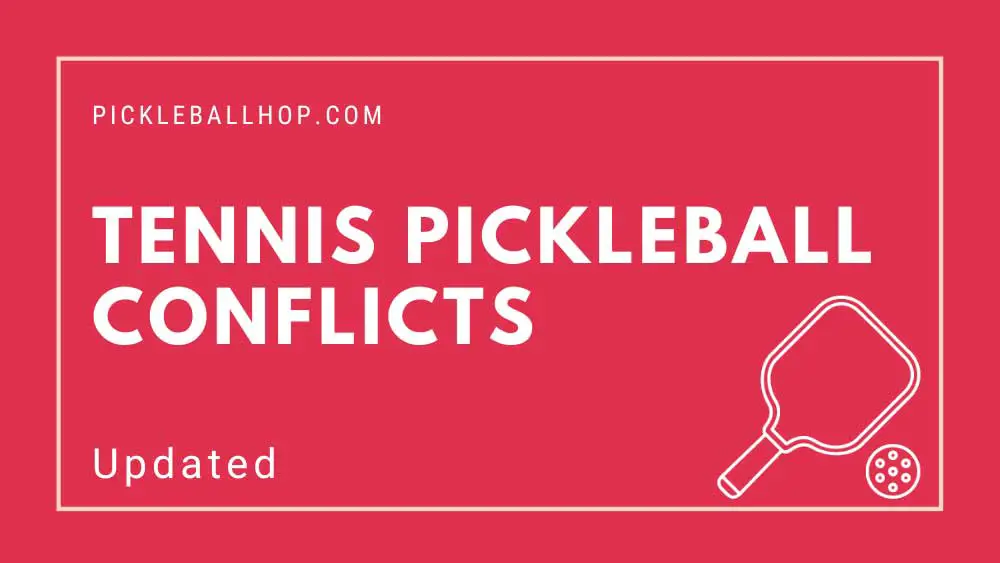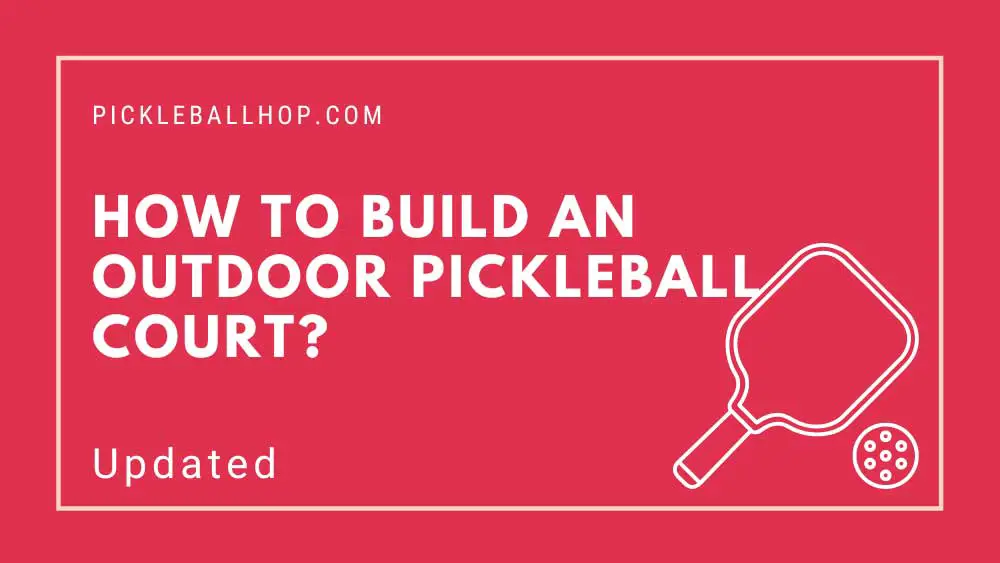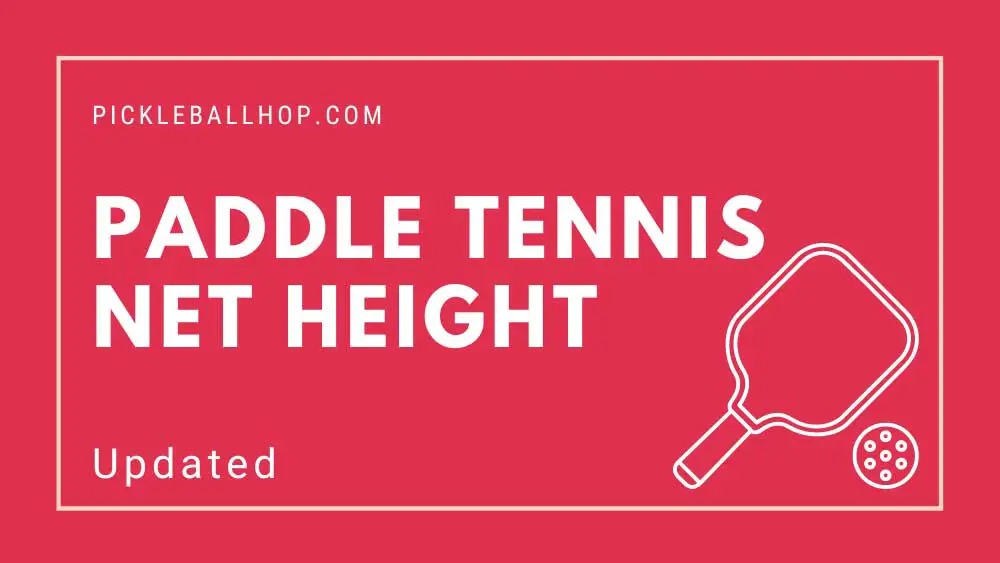Just like Pickleball at the kitchen line, racquetball is a very fast game. Pickleball is played over the net, whereas racquetball is played as low as possible against the front wall, which is the biggest difference between the two sports.
What’s the Difference Between Racquetball and Pickleball?
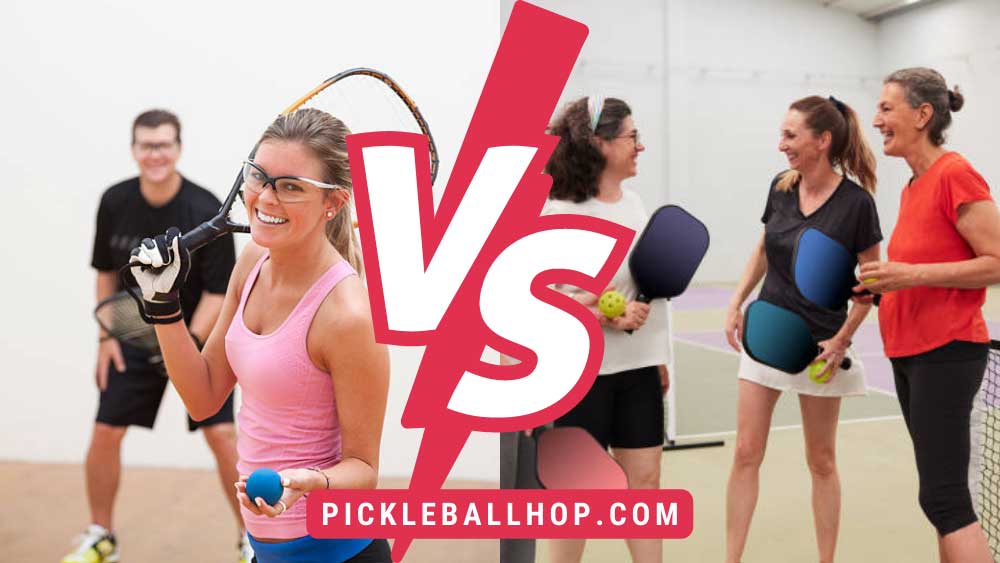
As far as popularity goes, all sports fluctuate. Historically, indoor racquetball was the most popular racquet sport available and clubs were built specifically for it. There has been a surge of interest in pickleball throughout the country in recent years. There are new groups entering the game. Even at ages when other sports are no longer feasible, pickleball is proving to be an interesting game to play for people who used to play tennis or other sports.
There are many similarities between the two sports, despite their differences. Let’s begin with those.
Skills
Tennis is more difficult to play than both sports. It is easier to learn and play both of these games than tennis due to the smaller size of the court and hitting instrument. Despite the fact that pickleball can be hit much faster than racquetball, the quality of play in both activities is enhanced with good eye-to-hand coordination, as well as the ability to react quickly to the ball.
The Court
There is a similar size difference between the two courts. Pickleball courts are only four feet longer than each other and have the same width. It is possible to play both indoors and outdoors. Courts for outdoor racquetball are difficult to find, and outdoor racquetball is relatively rare.
Muscle Groups Used
In order to drive the ball, both players must have strong arms and wrists. Although both games involve the lower body, pickleball occupies a much smaller space, so strong legs are not as important as in other games. The legs, however, play an important role in shot-making in both cases.
Equipment
Both use balls, but the shapes, sizes, materials, and speeds differ significantly. High-speed shots can be made with racquetballs and hollow rubber balls. Playing pickleball indoors is usually different because pickleball balls are hard, hollow, and have holes in them.
It is not necessary to wear specialized shoes for either sport. However, court shoes are more beneficial for players of either sport than running shoes or basketball shoes. In addition to improving lateral movement and stopping and starting, specialized shoes are beneficial to play.
Racquetball and tennis racquets are much larger than pickleball paddles. In addition, the face is solid and lighter. The process of generating spin is more challenging. There are many differences between materials and manufacturing methods. It is important to replace an entire pickleball paddle if it is damaged, dented, or cracked since pickleball paddles do not have strings.
When the paddle is used frequently, the surface wears out and needs to be replaced. Restringing racquetball racquets is similar to restringing tennis racquets, which are usually required on a regular basis.
Players
There can be two players (singles) or four players (doubles) in both games. Racquetball can be played with three players (cut-throat), but pickleball doesn’t have that option (but it’s possible).
Scoring
In both games, only servers are able to win points, and both games usually end with the first to 11 and two points in front. Different game scores may be required to win tournaments.
There is a significant difference between these two games, however. There are a number of significant differences between the two:
A wall (including the ceiling)
A wall is an important strategic piece in scoring points in racquetball, both as a boundary and as an important boundary. The back wall can be used to play balls that pass you by. Pickleball has lines as boundaries. It is important for angle shots and passing shots to be hit against the walls during racquetball games.
Net
The net must be cleared every time a shot is taken in pickleball to win the game. In racquetball, the ball is often driven down into the corners to win points since there is no net. Pickleball and tennis players have a hard time adjusting to the difference between hitting shots down and up over a net. Read our guide on pickleball nets by clicking here.
The Non-Volley Zone
Except for hitting volleys, players have access to the areas closest to the net in pickleball. Racquetball does not have a similar restriction. This area is also prohibited from serving. You can read a detailed guide on a non-volley zone by clicking here.
Two Bounce Rule
Serves and returns of serves cannot be hit before they bounce only in pickleball. There is a significant impact on the play as a result of this very important rule.
A large number of players are enthusiastic about both sports.
Is Racquetball Good Exercise?
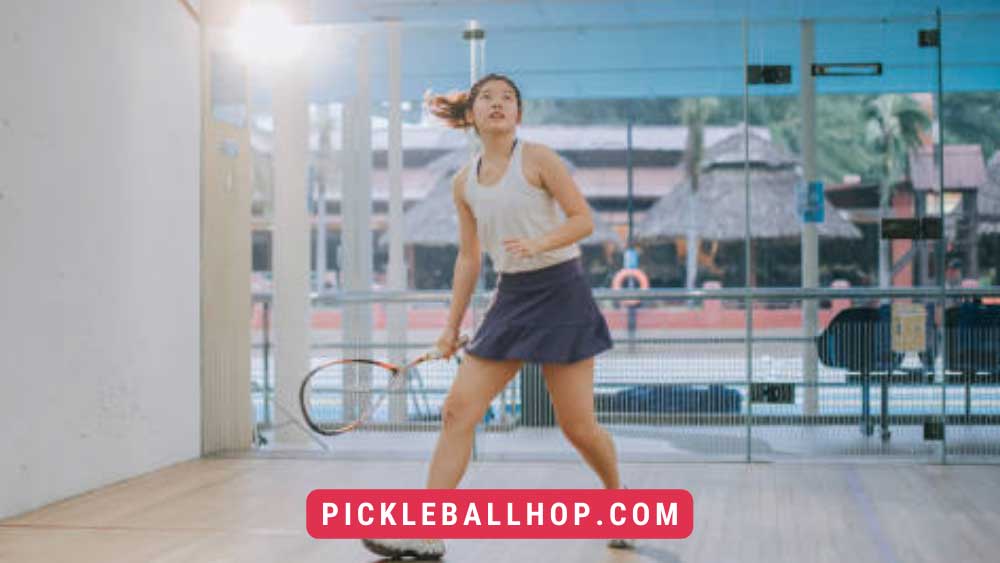
There is no doubt about it. Many times within a single point, players are forced to switch sides and fronts quickly. Hitting a shot usually requires greater strength and energy than the process of aiming.
Is Pickleball Good Exercise?
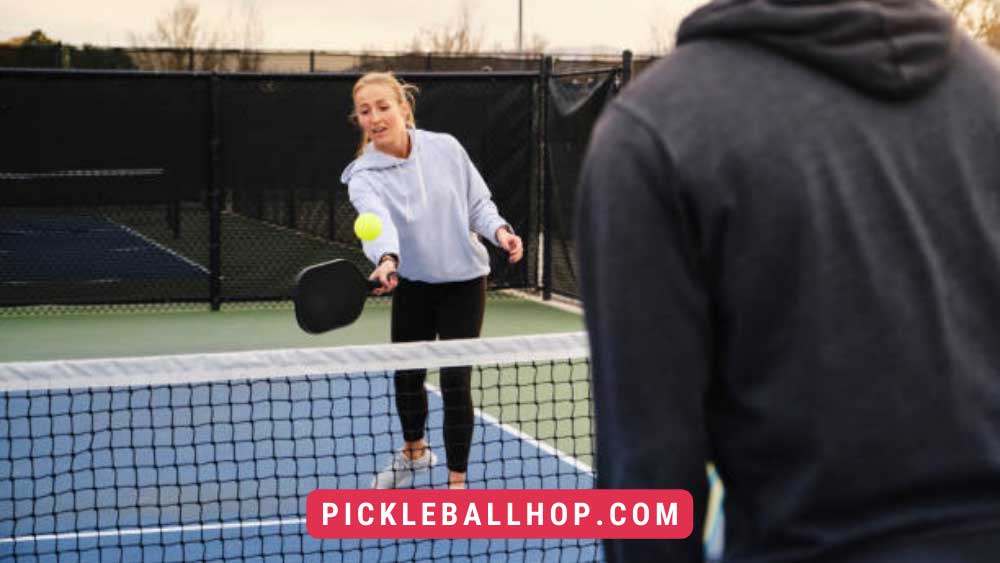
The answer is yes. It does require players to be on their feet and move around, although pickleball takes up less space than other racquet sports. The majority of shots however are dinks or drops, which don’t require much physical effort, but the length of the rally can persist for a long time before a point is won. Finesse is more often than not what wins points. You can read the full guide on is pickleball good exercise details here.
Pickleball vs Racquetball Comparison
In addition to the many differences and similarities between tennis and pickleball, tennis players make excellent pickleball players. Top pickleball players often have deep-rooted backgrounds in elite-level tennis, and it shows. There is no match for tennis when it comes to carryover mechanics, movement, and court awareness, and we see this when we watch pickleball professionals do things we can only dream of.
Pickleball shares many characteristics with another racquet sport which is increasing pickleball’s number of participants significantly. This article is not an attempt to determine which sport produces the best pickleball player, but rather a celebration of a sport that has enriched the game of pickleball with so much talent. This is where racquetball comes in. One of the fastest sports in the world is racquetball, which can be found in health clubs across the country. In the amateur play, racquetball players reach speeds of over 100 mph, and professionals can reach speeds of up to 175 mph. When racquetball players put down their racquets and pick up a pickleball paddle, many aspects translate well, but there will be challenges when they learn this new, unique game. Taking a look at their differences and similarities, let’s now analyze their differences.
Where Racquetball Players Will Find Comfort:
- Wrist Snap: The amount of wrist snap used in racquetball is one of the biggest carryovers. Using hips, core, and wrist snap are what makes racquetball a power game – it is similar to swinging a baseball bat to hit the ball hard. The serve, overheads, and dinks that are thrown into the air should benefit from this in pickleball.
- Ball Speed: Racquetball players can also easily transition from one aspect of the game to another by adjusting the speed of the ball. In spite of the fact that pickleball can go zipping by your head, the game is generally played at a slower pace, and even overhead smashes are limited to speeds of around 70 mph. Pickleball is not slow, but when an athlete moves from racquetball to pickleball, the overall speed of the game will decrease.
- Footwork: There is ample lateral movement in racquetball, as well as front-to-back movement. Players who have played racquetball for years will find that their quick feet translate perfectly to pickleball. Make sure your pickleball shoes have a rubber sole and don’t wear gum-soled shoes!
Areas where racquetball players might need some practice:
- Balls are hit directly at them: Racquetball players are used to having the ball hit into the wall rather than directly at them. Getting used to this will take some practice since elite pickleball players will not only hit the ball at the perfect spot, but they’ll also hit it with as much pace as their little plastic ball allows them to! Getting used to this might take a while!
- Different paddle angles: In racquetball, the ball must be hit flat. Topspin or slices don’t matter in this game, since power is everything. A player’s progress will be accelerated if they learn how to hit the ball from different angles with their paddle as soon as possible.
- Spin: The fact that your opponent’s spin is unpredictable will also take some time to get used to. When you’re used to no spin at all, topspin, slice, and side spin aren’t easy to deal with. As you progress in this sport, you will need to understand how topspin and different types of side spins will react!
Answer a few simple questions to find your perfect paddle.
Pickleball vs Racquetball
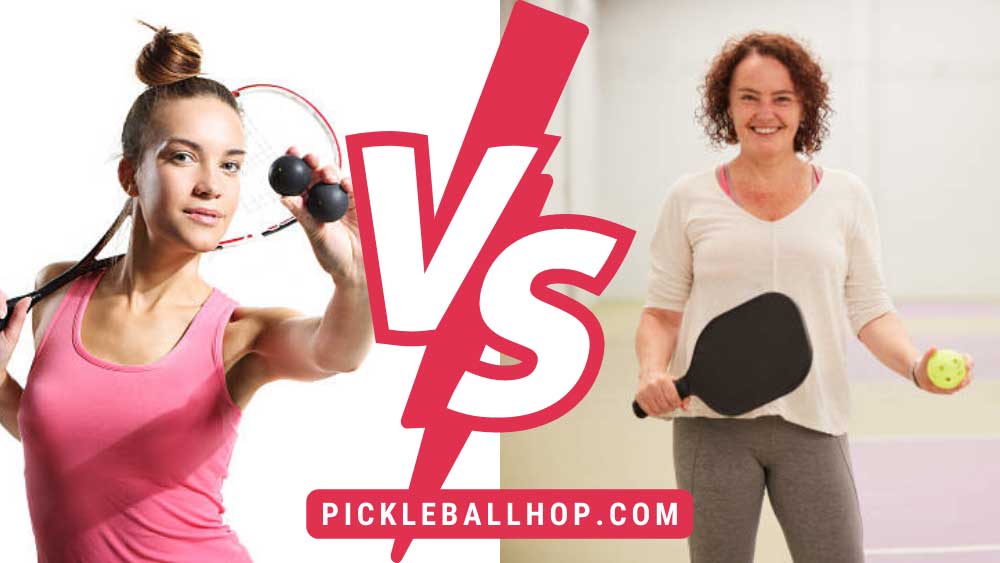
Racquetball and pickleball are completely different sports. Besides being round and bouncing, they only have two characteristics in common. There are two types of pickleball: indoor and outdoor. A pickleball played outdoors is characterized by its 40 smaller holes, essentially to allow it to still fly through the air without being affected by the wind. The wind is not a factor when playing indoor pickleball, so it has 26 larger holes.
It is made of 100% rubber and is smaller than a pickleball. Their durability makes them a good choice for bouncing off walls but they are relatively hard. It’s fantastic how often they are smashed off racquets and into walls. They’re bouncy and similar to pickleball.
Pickleball Courts vs Racquetball Courts
There are no two courts more opposite than pickleball courts and racquetball courts. The pickleball court typically measures 44′ long, 20′ wide, and has a 36″ high net. A serve must land within specific lines, on or inside sidelines and baselines, and out of the non-volley zone unless a ball bounces in.
Racquetball courts are traditionally found indoors, typically in gyms and health clubs. Besides walls and ceilings, it also has a door for accessing the court. When you’re inside, everything’s fair game. It doesn’t matter what the ball hits as long as it strikes the front wall before hitting the floor. Racquetball courts measure 40′ long, 20′ wide, and 20′ tall (the serve is another story).
Pickleball Paddles vs Racquetball Racquets
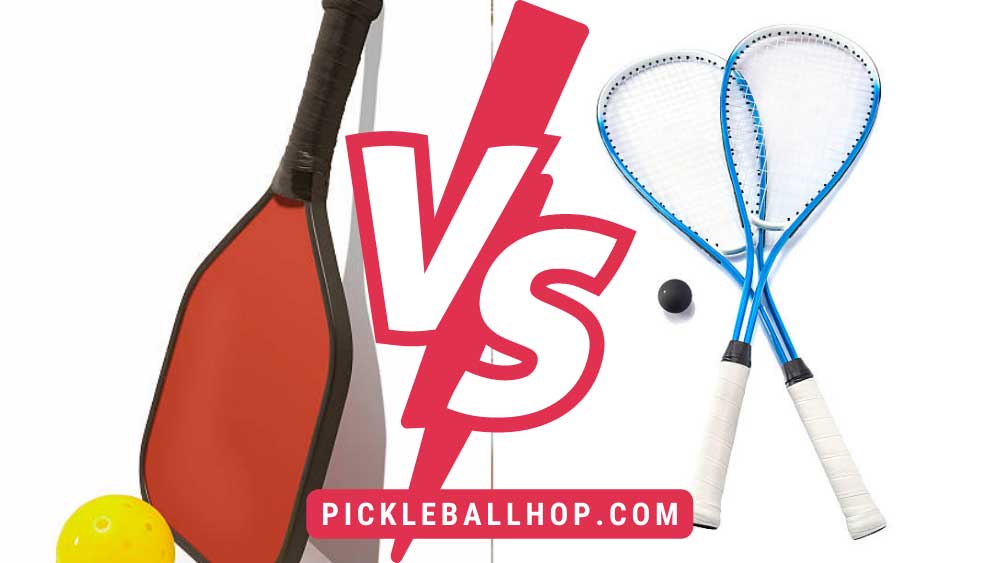
There is usually a stringbed that covers approximately 70% of a racquet’s length and 95% of its width on racquetball racquets. Racquets usually measure 22″ long. Performance frames are usually 100% graphite, while recreational frames are made of aluminum. A racquet’s weight is measured in grams, not ounces. An unstrung racquet typically weighs about 160-180 grams, and a strung one weighs about 185-205 grams.
There are several materials used in pickleball paddles, including honeycomb cores, polymer, graphite, fiberglass, and carbon fiber. The paddles fall somewhere between ping pong paddles and padel paddles. There are usually between 12-18mm in width, roughly 15-16″ in length, and 7-8.5 ounces in weight.
It goes without saying that any experience in racquet sports will provide an advantage when playing pickleball. The reason it’s so addictive is because of that! Most advanced pickleball players step onto the court as racquetball players right out of the gate. The difference-maker in whether they can take their game to the next level will be their ability to embrace the aspects of the game outside of their nature.
You may enjoy reading Best Pickleball Paddle for Spin

